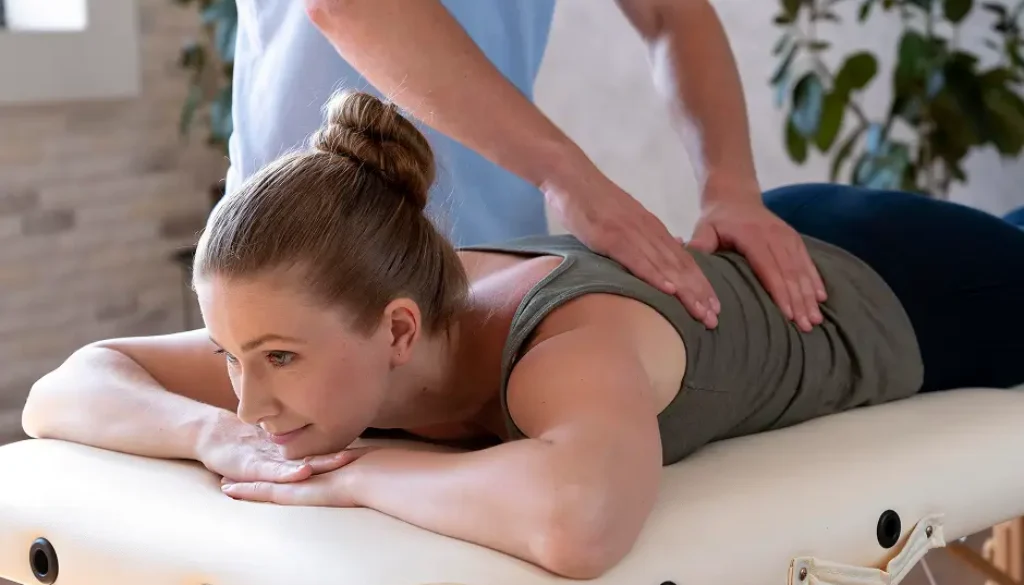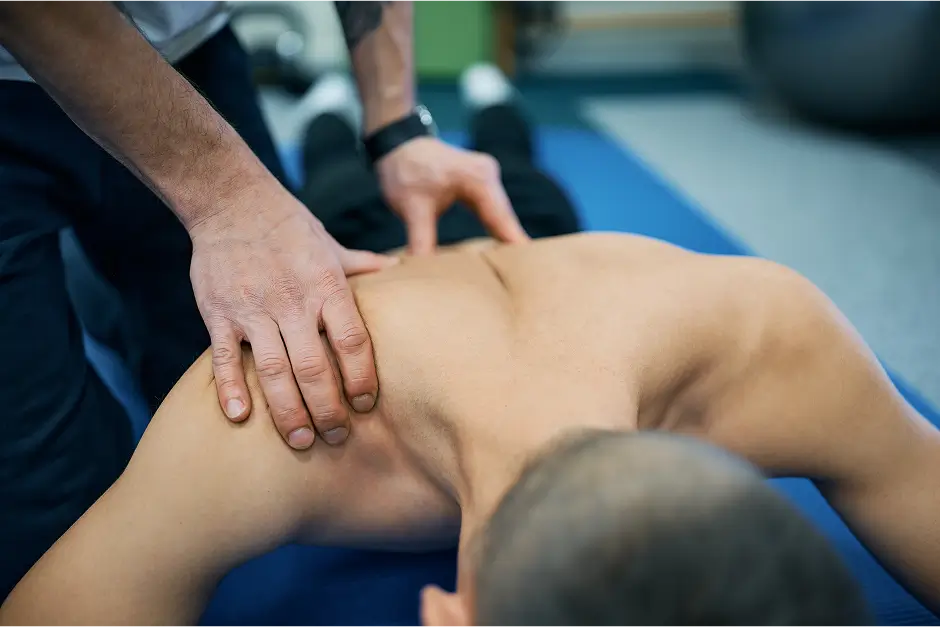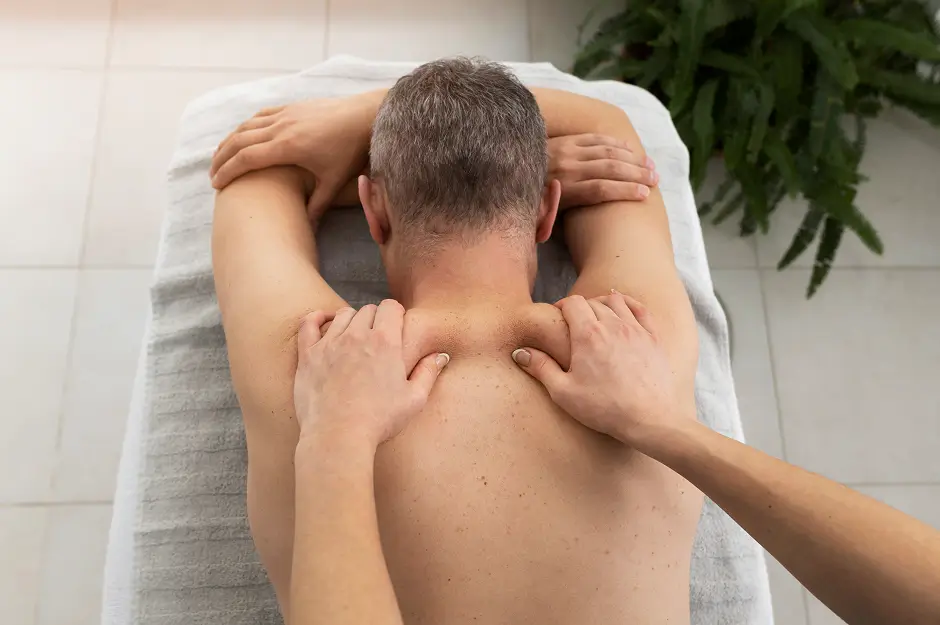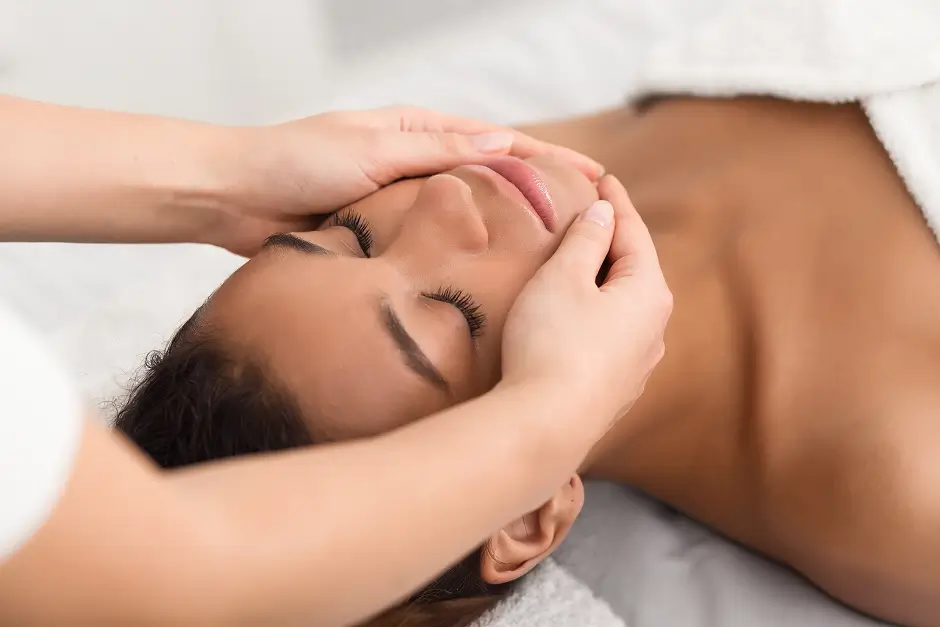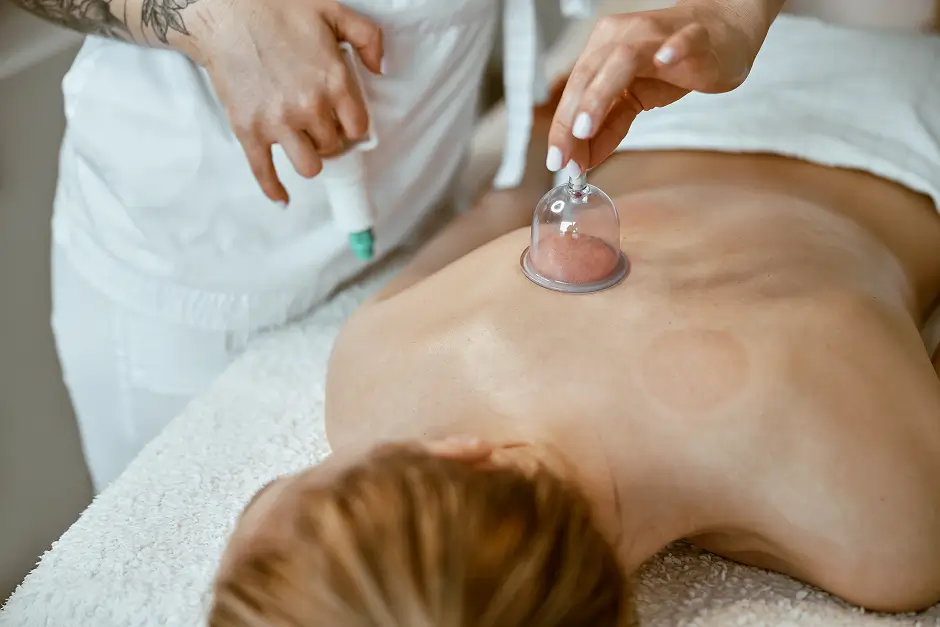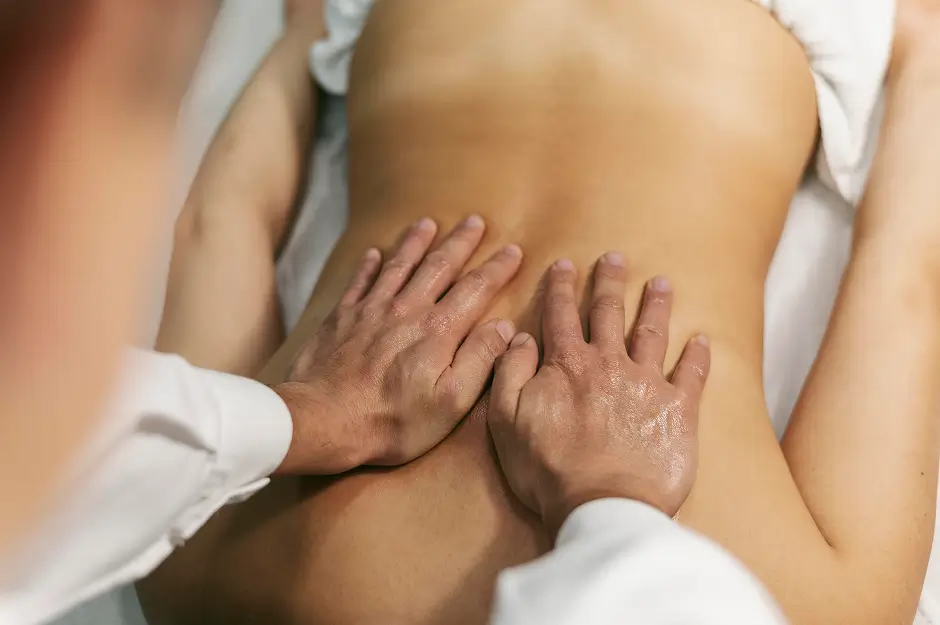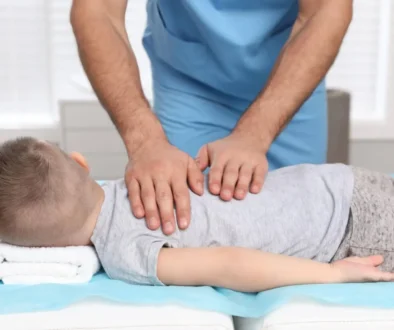27 Types of Massage and Their Health Benefits
With so many massage styles available, it can be tough to know which one is right for you. Each type of massage uses specific methods designed to meet different needs. For example, many Asian massage techniques are typically performed with the patient fully clothed, while Western styles, like Swedish massage, often use oils and are done directly on the skin.
What is Massage Therapy?
According to the Mayo Clinic, massage therapy is a holistic practice that involves manipulating the skin, muscles, tendons, and ligaments to help with healing and easing pain. Therapists may use their hands, elbows, arms, or even specialized tools to target injured or strained areas of the body.
Beyond easing pain, massage therapy can boost circulation, lower stress, and support both mental and physical well-being. It is widely used in medical and spa settings alike and can be customized to treat a variety of conditions – from sports injuries to chronic pain, tension, and anxiety.
1. Swedish Massage
Swedish massage is the most commonly practiced form of Western massage. It uses techniques to relax muscles by applying light to firm pressure, increasing joint mobility and blood circulation. The goal is to boost oxygen flow in the blood and help eliminate toxins from muscles, providing deep relaxation and reduced tension.
During a Swedish massage, you may remain partially clothed and will be covered by a sheet while lying on the massage table. The therapist will adjust the sheet to target specific areas if needed.
This gentle, full-body massage often includes kneading, long flowing strokes toward the heart, deep circular motions, gentle vibration and tapping, and passive joint movements. Sessions typically last 60 to 90 minutes. It’s great for full-body relaxation and easing muscle tightness.
2. Deep Tissue Massage
Deep tissue massage targets the deeper layers of muscles and connective tissue. It’s ideal for people suffering from chronic muscle pain, stiffness, tightness, or old injuries. This massage uses slower, stronger strokes and deep finger pressure to relieve tightness and address “trouble spots” under the skin. Unlike Swedish massage, deep tissue work focuses on breaking down knots and easing tightness that can affect mobility or cause discomfort. Although it can be more intense, a proper deep tissue massage should never cause sharp pain. It may also help improve posture and support recovery from sports or repetitive strain injuries. Sessions typically last 60 to 90 minutes and can leave you feeling relaxed.
3. Sports Massage
Sports massage supports muscles and joints under repetitive strain, making it popular among athletes and active individuals. It can also be useful for people with physically demanding jobs or those experiencing chronic muscle tension from repetitive movements. The focus of sports massage is to improve flexibility, athletic performance, reduce muscle soreness, and prevent or recover from related injuries. Therapists use a mix of deep pressure and calming strokes, targeting specific areas. It may also help ease anxiety and relax your muscles.
A sports massage session typically lasts 60 to 90 minutes and can be full-body or focused on certain muscle groups. You can choose to wear loose clothing or for a session with direct skin contact.
4. Hot Stone Massage
Hot stone massage uses warmth and gentle pressure to ease muscle tension and provide deep relaxation. During this therapy, smooth, heated stones are placed along specific points on the body, often on the back, legs, arms, or palms. The heat penetrates the muscles, helping to improve blood flow, reduce stiffness, and ease pain. Therapists may also use the stones as tools to gently massage the muscles, making relaxation deeper. Some treatments may even use both warm and cool stones to stimulate circulation and calm the nervous system. Hot stone massage is an excellent choice for suffering from muscle tightness, chronic pain, or stress. A standard hot stone massage session lasts around 90 minutes.
5. Aromatherapy Massage
Aromatherapy massage combines the benefits of massage therapy with the positive effects of essential oils. This type of massage is perfect for people who need both physical and emotional relaxation. During the session, diluted essential oils are applied to the skin or diffused into the air. The therapist uses gentle, flowing strokes to promote relaxation and reduce muscle tension. Aromatherapy massage can help improve mood, alleviate stress and anxiety, and ease mild pain. Therapists usually select the oils based on your preferences or health goals, but always inform them of any sensitivities. You may choose a full-body massage or focus on specific areas like the back and shoulders. The session usually lasts between 60 and 90 minutes and can be performed with or without clothing, depending on your preference.
6. Thai Massage
Thai massage is a dynamic, full-body massage designed for people who want an active approach to treating tension and improving flexibility. The technique uses stretching, joint mobilization, acupressure, and muscle compression.
Known in Thailand as “nuat phaen boran” or “the ancient-manner massage,” this style uses the therapist’s hands, thumbs, and elbows to apply firm pressure while guiding the client into various yoga-like positions. It is usually performed on a padded mat on the floor, with clients wearing loose, comfortable clothing.
Thai massage is particularly beneficial for individuals who engage in sports, dance, or activities requiring muscle flexibility. A Thai massage session typically lasts between 60 and 90 minutes.
7. Shiatsu Massage
Shiatsu massage, which means “finger pressure” in Japanese, is a traditional massage that focuses on applying rhythmic pressure to specific points of the body. Originating in Japan, it uses both Western anatomical knowledge and concepts from traditional Chinese medicine. The massage is usually performed on a floor mat with the client fully clothed in comfortable attire that allows freedom of movement.
Shiatsu uses gentle yet firm finger, palm, and thumb pressure along energy pathways, restoring balance, easing tension, and improving overall health. It’s often recommended for people suffering from stress, muscle tightness, fatigue, or headaches. The technique may also include joint rotations and stretching, similar to assisted yoga poses. Sessions generally last between 60 and 90 minutes.
8. Tui Na Massage
Tui Na is a traditional Chinese bodywork therapy that mixes massage with principles from martial arts and Traditional Chinese Medicine. Practitioners use techniques like pressing, kneading, and rolling to stimulate energy flow (qi) through the body’s meridians and muscles. For better effectiveness, it’s often paired with acupuncture, cupping, and herbal treatments. Tui Na is especially helpful for people with chronic pain, lower back tension, or general stress.
9. Reflexology
Reflexology is the physical act of applying pressure to the feet and hands with specific thumb, finger, and hand massage techniques without the use of oil or lotion. It is based on a system of zones and reflex areas that reflect a map of the entire body – stimulating these points can influence overall health. Reflexology primarily focuses on the feet and hands, so it is not considered a full-body massage
The technique helps boost blood circulation, provides relaxation, eases pain, and improves nerve function. It can be used as supportive therapy for people recovering from fatigue, anxiety, headaches, or stress-related conditions. Reflexology is a popular complementary therapy among cancer patients, as noted in a study by the American Cancer Society journal, for its potential to improve quality of life without intense physical manipulation. Sessions usually last 30 to 60 minutes.
10. Prenatal Massage
Prenatal massage supports the changing body of pregnant women. This gentle massage helps alleviate pregnancy-related discomforts like backaches, joint pain, leg cramps, and swelling. It is also great for relaxation and may reduce stress and anxiety. Typically, the therapist will avoid areas like the abdomen and focus on the lower back, hips, legs, and shoulders. The client may lie on their side or on a specially designed table with a belly cutout. Many therapists recommend waiting until after the first trimester to begin prenatal massage, and it’s always best to consult with your doctor beforehand. Sessions usually last between 45 and 60 minutes.
11. Lymphatic Drainage Massage
Lymphatic drainage massage is a technique designed to improve the natural flow of lymph fluid through the body. The massage therapist uses light pressure and rhythmic strokes to stimulate the lymphatic system, helping remove toxins, waste, and excess fluids. This type of massage may benefit people with conditions like lymphedema, fibromyalgia, fatigue, or after certain surgeries. It is also used to reduce swelling and improve blood circulation. The treatment usually lasts around 60 minutes. You’ll remain clothed or partially clothed, and your therapist will focus on affected areas. It’s always best to consult your doctor beforehand, especially if you have certain health concerns like heart problems, infections, or kidney disease.
12. Craniosacral Therapy
Craniosacral therapy is a gentle bodywork method that focuses on treating pressure in the bones of the skull, spine, and pelvis. A therapist uses light touch to boost the natural flow of cerebrospinal fluid. Better fluid circulation can help relax the body and balance the nervous system. Sessions often help with symptoms like headaches, migraines, neck pain, TMJ disorders, and stress. It can also affect your sleep and provide relief from chronic pain. The therapy is done fully clothed, and the practitioner may gently manipulate your head, neck, and back. Always consult your healthcare provider to see if this therapy is safe for you. Treatments usually last around 60 minutes.
13. Trigger Point Therapy
Trigger point therapy focuses on pain caused by tight muscle fibers, which are called trigger points, that can develop from injuries, overuse, or chronic tension. During a session, a massage therapist applies pressure using their fingers, knuckles, elbows, or specialized tools to release these knots, improving blood flow. This technique is also good for muscle relaxation and reducing discomfort. Trigger point massage can benefit people experiencing headaches, neck or back pain, and other types of pain. While the therapist may address the whole body, the primary focus remains on affected areas. Sessions usually last anywhere between 60 and 90 minutes.
14. Facial Massage
Facial massage is a gentle treatment that focuses on relaxing the facial muscles, improving blood flow, and skin health. Common massage types here include kneading, tapping, and gentle pressure with the hands or specialized tools. Types of facial massage include lymphatic drainage, reflexology, shiatsu, gua sha, and acupressure. Benefits may include reduced sinus pressure, relief from TMJ-related discomfort, and support in managing scar tissue. Facial massages are often used for relaxation or as a complementary part of skincare routines.
15. Indian Head Massage (Champissage)
Indian Head Massage, or Champissage, is an ancient therapy from India, practiced for over 1,000 years. It focuses on the scalp, face, neck, shoulders, and upper arms. Therapists use rhythmic, firm movements to stimulate blood circulation, ease stiff muscles, and provide relaxation. Indian Head Massage can reduce headaches, improve lymphatic drainage, help with memory, concentration, and deep relaxation. No oils are usually used, and the client remains fully clothed during the session. Treatments usually last about 30 minutes.
16. Full Body Massage
A full body massage is a type of massage that works on all major areas of the body, like the back, arms, legs, shoulders, neck, and feet. The therapist uses various techniques, often with oil or balm, to reduce muscle soreness, ease tension, and provide deep relaxation. There’s no single routine though. The massage can be personalized to target your specific needs, like chronic pain, recovery, digestion support, or easing anxiety and headaches. Afterward, you’ll have some time to relax, hydrate, and enjoy the light feeling that follows this deeply satisfying experience. Sessions usually last 60 to 90 minutes.
17. Myofascial Release
Myofascial release therapy releases stiffness and tightness within the fascia, which is the connective tissue network that surrounds muscles and organs. A therapist applies gentle, sustained pressure using their hands, fingers, elbows, or specialized tools to stretch and loosen restricted areas. The goal is to help reduce pain, improve mobility, and restore the fascia to a more relaxed state. Common issues that may benefit from myofascial massage are myofascial pain syndrome, chronic headaches, and venous insufficiency. Sessions usually last around 60 minutes.
18. Balinese Massage
Balinese massage is a full-body therapy that uses deep-tissue techniques with elements of aromatherapy, acupressure, reflexology, and stretching. Balinese is traditionally practiced in Indonesia. It uses skin rolling, kneading, and pressure-point work with the calming effects of essential oils. This massage is designed to ease muscle tension, improve blood circulation, and calm the nervous system. It’s especially helpful for reducing stress, easing sore or knotted tissue, and improving mood through deep relaxation. Balinese massage is typically performed on a massage table or floor mattress, and may last around 60 minutes.
19. Ayurvedic Massage (Abhyanga)
Abhyanga is a traditional Ayurvedic oil massage that uses warm, herb-infused oils chosen based on your dosha. The therapist uses long, flowing strokes on the limbs and circular motions around joints to help the oil absorb deeper into the skin and tissues. This technique helps with detoxification, relaxes the nervous system, and balances the body’s energy – especially for calming vata dosha. The massage improves blood circulation, boosts immunity, and triggers a relaxed state. It’s deeply calming. Before booking, it’s best to check for any health conditions that may be contraindicated – especially infections, unmanaged high blood pressure, or active skin issues. Sessions typically last about 60 minutes.
20. Lomi Lomi (Hawaiian Massage)
Lomi Lomi is a traditional Hawaiian massage that uses long, flowing strokes with the hands, forearms, and elbows to work deeply into the muscles. It’s often called the “loving hands” massage because of the smooth, continuous movements that relax both body and mind. Coconut or macadamia oil is commonly used to keep the motions fluid. Therapists may also include gentle stretches and breathing techniques. This massage helps ease tension, improve blood and lymph flow, and help you feel better emotionally through relaxation. It’s especially helpful if you’re feeling stuck physically or mentally.
21. Cupping Therapy Massage
Cupping is a massage technique where small cups are placed on the skin to create suction. It’s often used to help with muscle pain, tightness, or fatigue. The suction pulls up the skin slightly, which may improve blood flow and help the body relax. Most people get it on their back or shoulders, and the cups are usually made of glass, silicone, or plastic. You might see round marks on your skin afterward – that’s normal and they fade in a few days. Many use cupping in conjunction with other treatments to ease tension.
22. Hydrotherapy Massage
Hydrotherapy massage is a massage type that uses water pressure to relax muscles, ease tension, and boost blood circulation. There are two common types: wet and dry. Wet hydrotherapy includes soaking in a warm pool while jets spray targeted areas. In dry versions, you lie fully clothed on a special bed while internal jets apply pressure through a waterproof surface. It is used to ease aches, support recovery after exercise, or simply relax. You can adjust water temperature and pressure during a session. It’s available in some spas and gyms, either as a full-body treatment or a shorter targeted session.
23. Active Release Therapy
Active Release Therapy (ART) is a hands-on technique developed by Dr. P. Michael Leahy in the 1980s to treat soft tissue issues caused by overuse. By addressing adhesions in muscles, tendons, and nerves, ART helps reduce tension, stiffness, and inflammation. It was originally designed for athletes, though it now supports a wide range of patients. Dr. Leahy based the method on individual symptom patterns, evolving it from his earlier work called Myofascial Release. Today, ART is used in sports medicine, chiropractic care, and integrative health practices to treat symptoms like numbness, muscle weakness, and discomfort from repetitive stress.
24. Ashiatsu Therapy
Ashiatsu is a unique type of massage therapy that uses the feet and legs to deliver the massage rather than the hands and arms. The therapist holds onto a bar or rope above the patient, then presses into the back using the feet. This therapy originated in the Kerala region of India.
The word “Ashiatsu” comes from Japanese – ashi meaning foot and atsu meaning pressure. During treatment, therapists apply deep, controlled pressure using long, gliding strokes, sometimes combined with stretches. Despite the idea of being walked on, Ashiatsu is usually customized to each person’s needs and can feel just as therapeutic as a deep tissue massage.
25. Chair Massage
Chair massage is a short massage using the hands while the patient sits in a chair. This typically is not the type of massage done in a therapeutic setting, but it can be a fast and easy release of tension and pain in a public setting. Some massage therapists will come to client offices or events to provide chair massage to participants.
Unlike table massage, chair massage is done fully clothed in a special forward-leaning chair with full support for the arms, legs, and head. It targets tension in the back, shoulders, and neck without oils or lotions, making it ideal for quick relief.
26. Amatsu
Amatsu is a form of massage that focuses on soft tissue and fascia. It combines ancient Japanese massage with a current understanding of anatomy and physiology to help realign joints and reduce muscle tension gently without harsh massage techniques.
It comes from traditional Japanese movement practices, and uses light touch and natural body movements to provide small but meaningful shifts in the body. Practitioners work without force, aiming to restore natural mobility and balance by releasing restrictions in fascia and soft tissues. This method supports the body’s ability to correct itself, often using minimal intervention to make movement easier.
27. Burmese Massage Therapy
Burmese Massage Therapy applies Indian, Chinese, and Thai massage techniques into a full-body massage style. It uses kneading and acupuncture to release stress and increase blood flow. This technique is known for its use of the elbows to apply acupressure.
Typically performed on a mat with the client fully clothed, Burmese massage uses deep pressure, stretches, and rhythmic movements. Therapists also use their hands, forearms, feet, and even knees. In some regions, it’s paired with Thanaka paste – a traditional remedy that provides cooling and skin-protecting effects. The practice is all about relaxation, better blood circulation, and flexibility, while its exact techniques can vary across regions of Myanmar (or from practitioner to practitioner).
Benefits of Massage Therapy
Massage therapy offers many benefits for patients. Depending on the techniques performed, many clients report greater relaxation and lessening of anxiety and depression after a massage therapy session. This is often due to the release of muscle tension and increased blood flow that massage therapy stimulates. Additional benefits of massage therapy include:
- Pain relief – Reducing tension and strain in the muscles and ligaments can reduce overall inflammation and pain in the body
- Improved exercise performance – Athletes find that some massage techniques improve the function of their muscles, helping them achieve greater performance
- Increased flexibility – Releasing muscle tension increases flexibility in the joints
- Reduced stress – Increased circulation creates an overall relaxing sensation
- Improved sleep – Patients often report improvements in sleep patterns after a massage treatment
- Fewer migraines – Migraine sufferers experience migraines less frequently after starting a massage therapy regimen
- Lowered blood pressure – After a massage, many patients have much lower blood pressure levels
- Improved balance – Older patients in particular may report improved balance after a massage therapy session
- Improve posture – Reduced muscle tension and improved flexibility can improve posture for many patients
How to Choose the Right Type of Massage
- Identify your main goal. Are you looking to relax, ease pain, recover from injury, or reduce stress? Different types of massage therapy target different needs.
- Consider your pain tolerance. Some massages, like deep tissue or trigger point, can be quite intense. Others, like Swedish or aromatherapy, are gentler.
- Think about health conditions. If you’re pregnant, recovering from surgery, or have chronic issues, choose types of body massage that are safe for you and your condition (like prenatal, lymphatic drainage, etc).
- Decide if you want oils or tools. Some types of massages use oils, stones, or even suction cups. Others use only hands and pressure.
- Time and budget matter. Some types of full body massage or specialty massages may take longer and cost more. Shorter sessions, such as chair massages or targeted therapy, are quicker and more affordable.
- Ask your therapist. If you’re unsure, consult with a licensed massage therapist about what’s best for your needs.
Conclusion
All these different massage types have beneficial qualities to offer, so if you’re in doubt about which one is right for you, there’s no harm in trying them all and seeing for yourself which one works the best. Whether you’re interested in deep relaxation, pain relief, or a holistic approach to health, exploring different massage styles is a great way to find what works the best for your body. Be sure to consult your healthcare provider first. Also it is a good idea to get your massage at a trusted clinic by a professional therapist or chiropractor Libertyville. They will help you find the best pain relief massage. Does massage help arthritis? They can help you understand that too.
FAQs about Types of Massage
What are the different types of massages?
There are many types of massage, each designed for specific needs. Popular styles include Swedish for relaxation, deep tissue for muscle tension, sports massage for injury recovery, and trigger point therapy for localized pain. Other types, like Thai, hot stone, or lymphatic massage, focus on stretching, circulation, or detoxification.
What are the most common types of massage and their benefits?
Common types of massage include Swedish (for relaxation and stress relief), deep tissue (for chronic muscle pain), and sports massage (to aid recovery and prevent injuries). Trigger point therapy targets tight areas, while lymphatic drainage helps reduce swelling. Each style offers unique benefits.
How do I choose between different types of massages for my needs?
To choose the right massage, think about your health goal – pain relief, stress reduction, or recovery. Deep tissue is effective for chronic pain, while Swedish is great for relaxation. If you’re unsure, a licensed massage therapist can help you select the best option for your specific needs.
Which massage techniques are best for pain relief and relaxation?
For pain relief, deep tissue, trigger point therapy, and myofascial release are often most effective. For relaxation, Swedish massage, aromatherapy, and hot stone massage are popular choices. In some cases, combining different techniques can be most effective.
What is the difference between massage therapy and therapeutic massage?
Massage therapy is a broad term that encompasses many techniques. Therapeutic massage focuses specifically on treating physical issues like muscle tension, pain, or injury recovery. In short, all therapeutic massage is massage therapy, but not all massage therapy is therapeutic.

